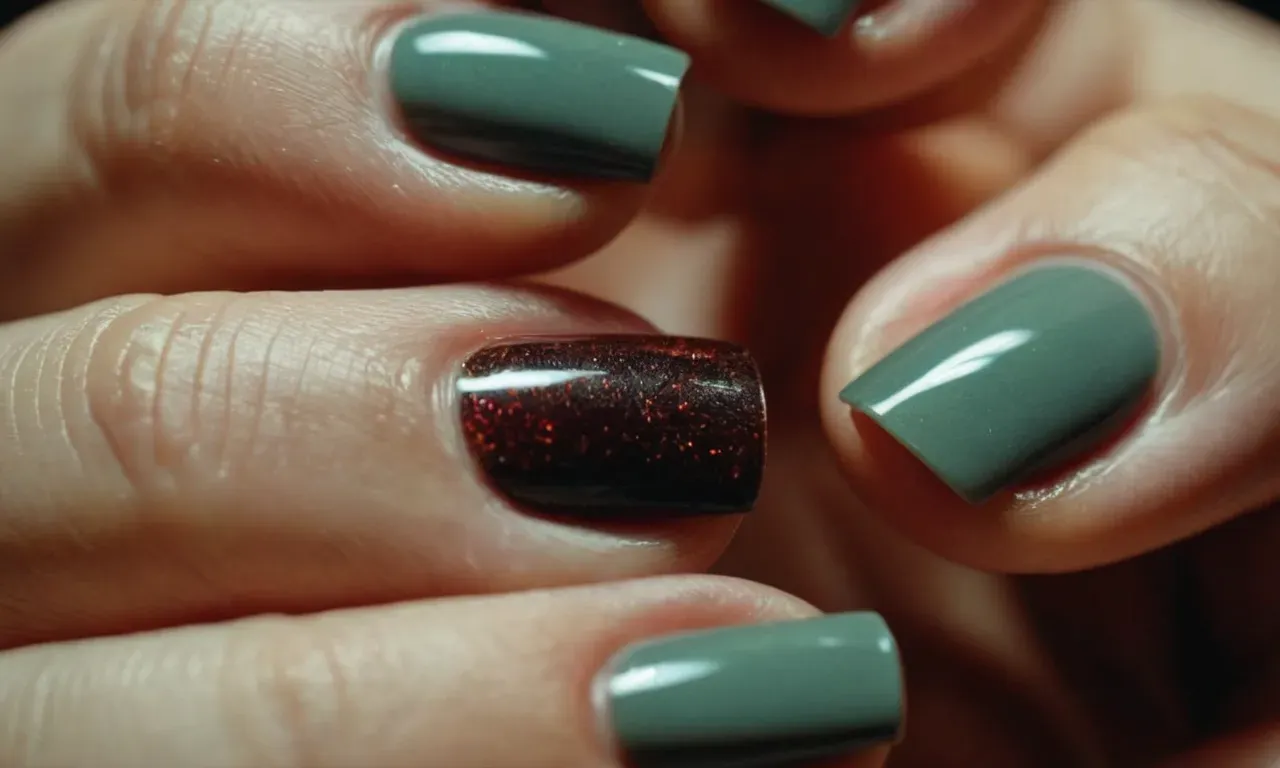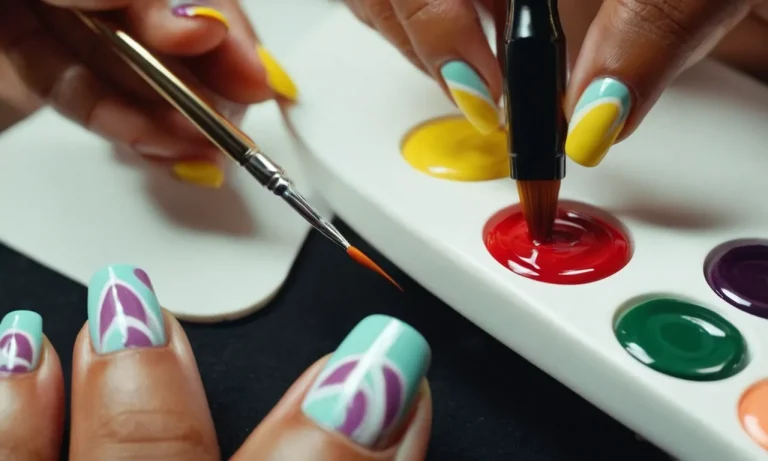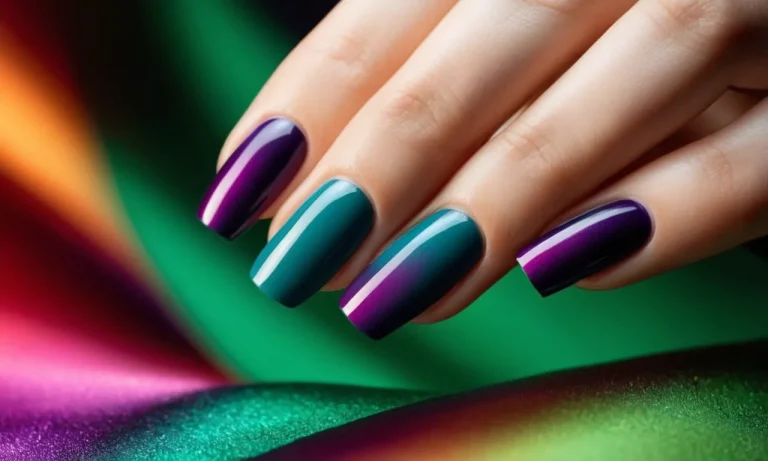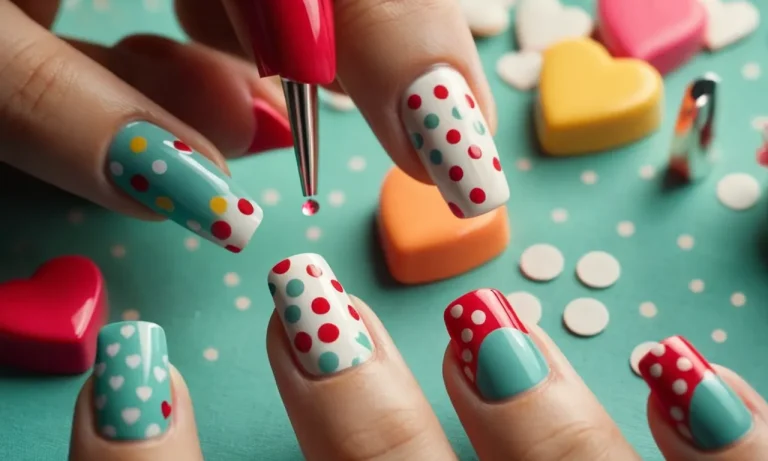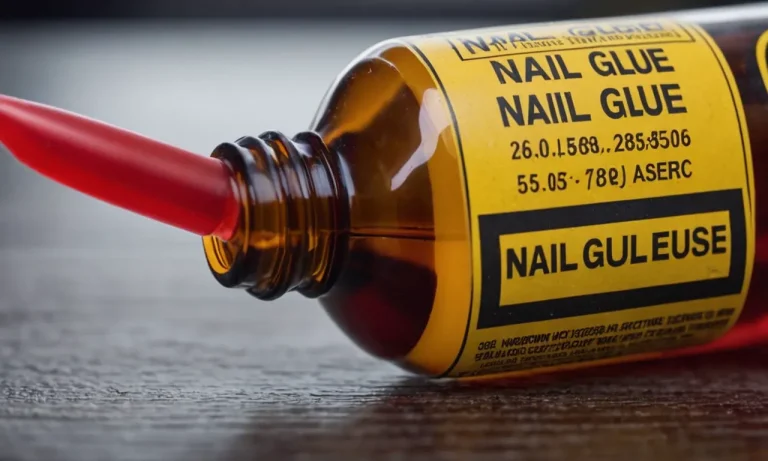What Is A Nail Cuticle? A Detailed Look At The Anatomy And Function
If you’ve ever gotten a manicure, you’re familiar with the cuticles on your fingernails. But do you know what cuticles actually are and what purpose they serve? In this comprehensive guide, we’ll explore everything you need to know about the anatomy and function of the nail cuticle.
If you’re short on time, here’s a quick answer to your question: The cuticle is the thin layer of dead skin cells that sits between the base of the fingernail and the surrounding skin. It seals and protects the matrix, or growing part, of the nail.
What Is the Nail Cuticle?
Definition and location on the nail
The nail cuticle, also known as the eponychium, is the thin band of tissue that overlies and protects the nail matrix (the part under the skin that produces new nail cells) as well as the nail plate. The cuticle sits at the base of the nail, sealing off the area between the nail and the proximal nail fold, which is the skin surrounding the sides and base of the nail.
Composition and structure
The nail cuticle is composed of dead skin cells and keratin just like the rest of the nail structure. However, the cells and keratin fibers in the cuticle are arranged randomly rather than in neat layers.
This gives the cuticle a soft, flexible texture that allows it to act as a gasket around the nail and prevent debris and bacteria from getting under the nail.
Underneath the visible cuticle is the living matrix that produces new nail plate cells. Tiny blood vessels in this matrix nourish the growing nail and shape the form of the cuticle.
Appearance and texture
When healthy, the nail cuticle has a lightly ridged texture and pale pink color from the blood vessels underneath. The edges slope down from the proximal nail fold to rest smoothly against the nail plate.
The cuticle can become dry, cracked, or inflamed if the nail matrix loses moisture. This causes the seal around the nail to weaken over time. An unhealthy cuticle provides an easy entry point for germs that can lead to nail infections.
While genetics plays a role, frequent exposure to water without moisturizing can degrade the cuticle over time. Nail biting and aggressive cutting of the cuticle also inflict damage.
The Anatomy of the Nail Cuticle
Proximal Nail Fold
The proximal nail fold, also called the base of the nail, is the skin that overlaps the back end of the nail plate and attaches to the nail bed. It helps protect the matrix, the area under the cuticle which contains nerves, lymph and blood vessels that aid nail growth (American Academy of Dermatology).
Lateral Nail Fold
The lateral nail folds are the skin folds along both sides of the fingernail or toenail. They cover and protect the sides of the nail bed. Together with the proximal nail fold, they prevent debris, bacteria and other foreign substances from entering underneath the nail (Cleveland Clinic).
Eponychium
Also known as the cuticle, the eponychium is the thin band of tissue that extends from the posterior nail fold to the front edge of the nail plate. It seals the nail to protect it from infection. Gently pushing back the eponychium once a week allows you to thoroughly clean underneath it and trim off any excess dead tissue (American Academy of Dermatology).
Hyponychium
The hyponychium is the area of skin located beneath the free edge of fingernails and toenails. It forms a seal between the free edge of the nail and the skin underneath, which acts as a protective barrier.
The tissue in this area contains plasma cells which provide immunologic protection against invasive organisms (National Center for Biotechnology Information).
Nail Matrix
The nail matrix, also called the matrix unguis, is the part of the nail bed under the cuticle from which the nail plate originates. It contains nerves, lymph and blood vessels that stimulate nail growth.
The matrix area under the proximal nail fold at the base produces most of the nail volume, while the area under the lunula adds thickness and hardness to the nail plate (Cleveland Clinic).
Nail Plate
The nail plate is the hard, translucent part of the nail that extends over the tips of your fingers and toes. As new nail cells develop in the matrix, they push older nail cells forward, compacting them to create the hardened nail plate.
Fingernails grow at an average rate of 3 mm per month, while toenails grow more slowly at about 1 mm per month (American Academy of Dermatology).
Lunula
The lunula is the white, half-moon shaped base of the visible nail plate. It’s created by the area of thick nail matrix under the cuticle that adds extra thickness and hardness to the nail plate. A healthy lunula at the base indicates good nail growth.
Multiple lunulae may also develop from trauma to the nail matrix (Cleveland Clinic).
The Purpose and Function of Cuticles
Protecting the nail matrix
The cuticle acts as a protective barrier for the nail matrix, which is the area under the cuticle that contains the cells that produce new nail growth. The cuticle helps prevent bacteria, viruses, and other contaminants from entering and infecting the nail matrix which could disrupt healthy nail growth.
Sealing moisture into the nail plate
The cuticle seals in moisture and natural oils into the nail plate. This helps keep nails strong, flexible, and prevents them from becoming dry and brittle which can lead to peeling, cracking, and breakage. The cuticle locks in moisture like a waterproof barrier.
Providing a barrier against bacteria and fungi
The cuticle prevents infectious microorganisms like bacteria and fungi from entering the skin around the nail and potentially causing infections like paronychia (nail infection). The cuticle acts as the nail’s first line of defense against invaders.
This protective barrier function is why it’s important not to bite or pick at cuticles which damages the skin seal.
Allowing smooth nail growth
As the nail grows and extends past the nail bed, the cuticle allows the nail to glide smoothly forward without catching on the surrounding skin. The cuticle’s waxy barrier prevents the nail from adhering to the skin and allows normal, even nail plate growth.
Removing or damaging the cuticle can distort nail growth.
Cuticle Care Tips
Moisturizing
Keeping cuticles moisturized is key to maintaining healthy nails. Use a cuticle oil or moisturizing hand cream daily to hydrate the cuticles and prevent dryness, cracking, or peeling. Look for moisturizers enriched with ingredients like vitamin E, coconut oil, shea butter, or jojoba oil.
Gently massage the product into the cuticles and nails for a few minutes. For an intensive treatment, apply moisturizer and wear cotton gloves overnight. Consistent moisture will help soften cuticles and prevent painful hangnails.
Avoiding cutting or tearing
It’s best to avoid cutting or tearing the cuticles. Trimming or picking at them can lead to infection or damage to the nail bed. Instead, gently push back the cuticles after softening them with moisturizer.
Use an orange stick or cuticle pusher to carefully nudge them back without cutting into the skin. If you get a hangnail, try applying moisturizer and gently massaging to encourage the rough skin to soften and detach naturally rather than tearing it off forcefully.
Using cuticle remover safely
Cuticle remover products contain chemicals like sodium hydroxide or acetic acid to help dissolve or loosen the cuticles. When used properly, they can help remove excess cuticle growth. However, these acids can burn the skin if left on too long, so it’s important to test a small area first and carefully follow directions.
Never aggressively scrape off the cuticles after chemical treatment. Rinse thoroughly and neutralize with vinegar. Limit use to once a month maximum to avoid damage. Consider seeing a professional if you want deep cuticle removal, as the chemicals require safe handling.
Seeking professional manicures
Visiting a nail salon for a professional manicure every 2-4 weeks can be a great way to maintain tidy cuticles. Experienced manicurists know the proper techniques for soaking, pushing back, and trimming cuticles without going overboard.
They can also remove any excess growth and apply moisturizing creams. When getting a manicure, look for sanitary practices like single-use tools and cleaned equipment. Be sure to communicate your preferences clearly.
For instance, request not to have your cuticles cut or nipped if that’s your preference. With routine professional care, your cuticles will look healthy and well-groomed.
Conclusion
As you can see, the cuticle may seem insignificant, but it serves important protective and functional purposes for the nail and surrounding skin. Understanding the anatomy and physiology of the cuticle allows you to properly care for your nail health.
With some simple moisturizing and gentle care, you can keep your cuticles looking neat and tidy.

